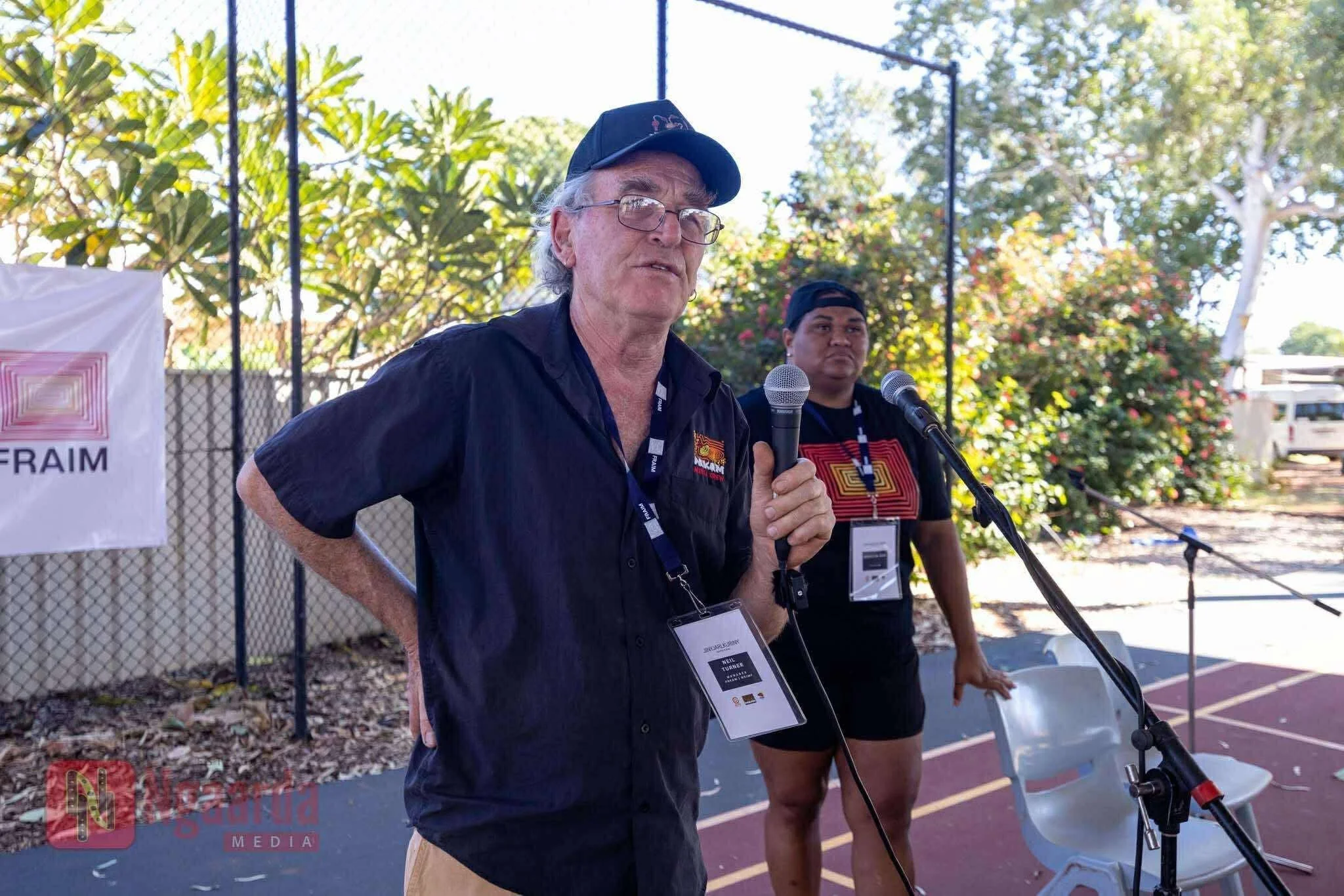THE EARLY DAYS AND FUTURE OF REMOTE MEDIA
Neil Turner first arrived in Ernabella (now Pukatja) in 1983 as a bilingual school teacher. One of his students was Jacob McKenzie, now chair of Pitjantjatjara Media.
“I was teaching upper-primary kids who spoke no English,” He said. “I had to learn the language quickly—and that opened the door to the media work.”
A year later, the Ernabella Video Project began. It became EVTV, the first community television station in Australia.
Turner soon joined cross-country expeditions recording the Kungkarangkalpa (Seven Sisters) songline. That early work shaped his commitment to remote media.
“We had no budgets—just a camera, some fuel and water, and a huge drive to record what mattered to people,” he said.
Since then, he’s attended 19 of the 21 National Remote Indigenous Media Festivals, including this year’s event in Bidyadanga. He also helped build the foundations for IRCA, now First Nations Media Australia.
While remote media has grown—especially through ICTV, radio networks, and live concert broadcasts—Turner worries that traditional story recording isn’t getting enough support.
“I haven’t seen that same passion for culture recording being sustained like it was in the early days,” he said.
“But the platform is there, and younger generations are taking it in new directions. That’s still worth backing.”

